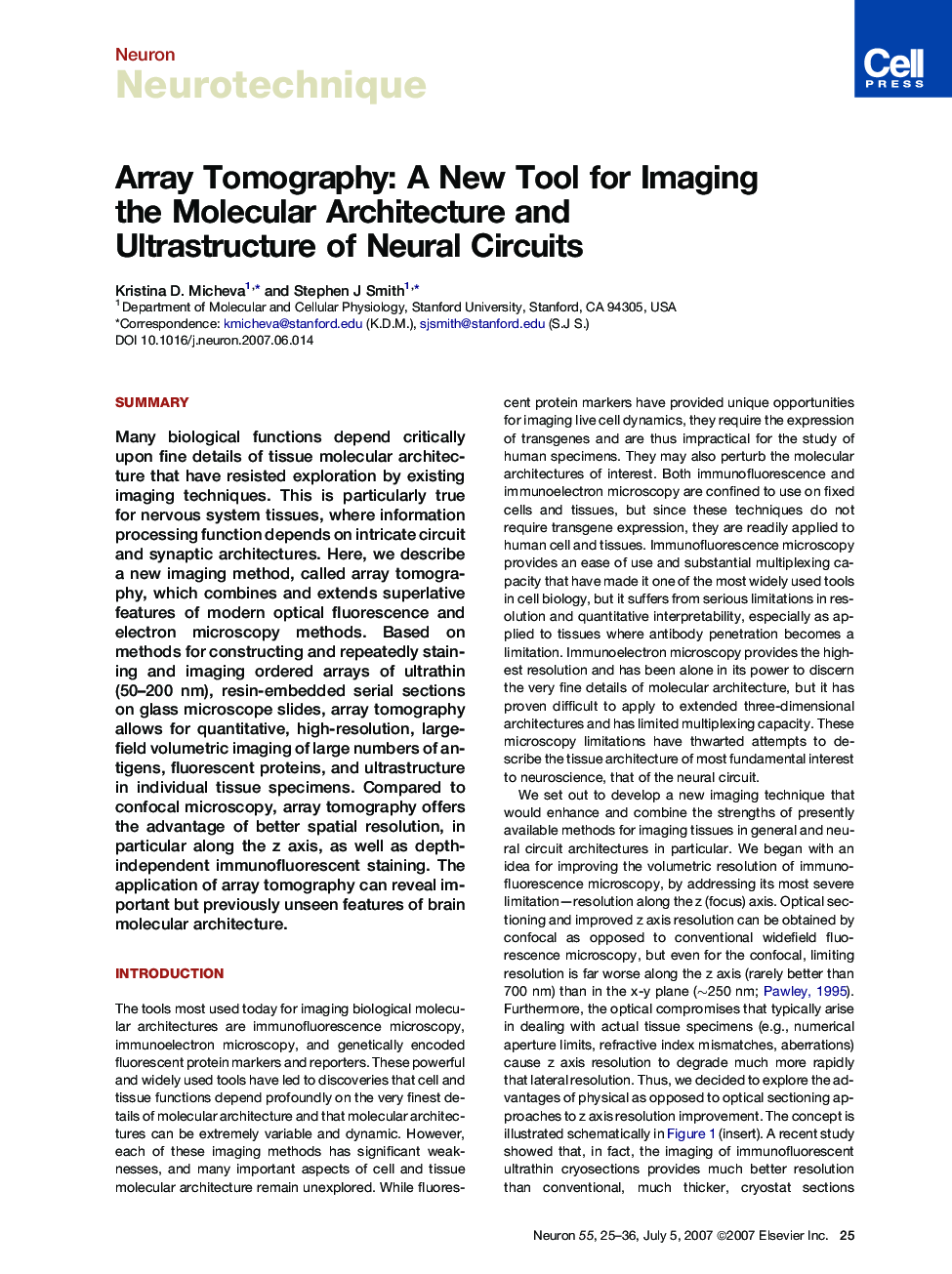| Article ID | Journal | Published Year | Pages | File Type |
|---|---|---|---|---|
| 4322704 | Neuron | 2007 | 12 Pages |
SummaryMany biological functions depend critically upon fine details of tissue molecular architecture that have resisted exploration by existing imaging techniques. This is particularly true for nervous system tissues, where information processing function depends on intricate circuit and synaptic architectures. Here, we describe a new imaging method, called array tomography, which combines and extends superlative features of modern optical fluorescence and electron microscopy methods. Based on methods for constructing and repeatedly staining and imaging ordered arrays of ultrathin (50–200 nm), resin-embedded serial sections on glass microscope slides, array tomography allows for quantitative, high-resolution, large-field volumetric imaging of large numbers of antigens, fluorescent proteins, and ultrastructure in individual tissue specimens. Compared to confocal microscopy, array tomography offers the advantage of better spatial resolution, in particular along the z axis, as well as depth-independent immunofluorescent staining. The application of array tomography can reveal important but previously unseen features of brain molecular architecture.
